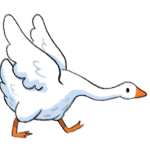Install Steam
login
|
language
简体中文 (Simplified Chinese)
繁體中文 (Traditional Chinese)
日本語 (Japanese)
한국어 (Korean)
ไทย (Thai)
Български (Bulgarian)
Čeština (Czech)
Dansk (Danish)
Deutsch (German)
Español - España (Spanish - Spain)
Español - Latinoamérica (Spanish - Latin America)
Ελληνικά (Greek)
Français (French)
Italiano (Italian)
Bahasa Indonesia (Indonesian)
Magyar (Hungarian)
Nederlands (Dutch)
Norsk (Norwegian)
Polski (Polish)
Português (Portuguese - Portugal)
Português - Brasil (Portuguese - Brazil)
Română (Romanian)
Русский (Russian)
Suomi (Finnish)
Svenska (Swedish)
Türkçe (Turkish)
Tiếng Việt (Vietnamese)
Українська (Ukrainian)
Report a translation problem


 United States
United States 












































































While these kinds of stories are certainly fun to speculate about, in this case, it’s been entirely debunked.
Unlike other bird species, baby pigeons can remain in the nest for up to six weeks so by the time they fly the coop, they’re already nearly fully grown and look like an adult pigeon.
Look closely, though, and you might see that baby pigeons aren’t red around their eyes yet, like an adult pigeon.
That colour comes later, at around sexual maturity, which occurs between seven months and one year of age.